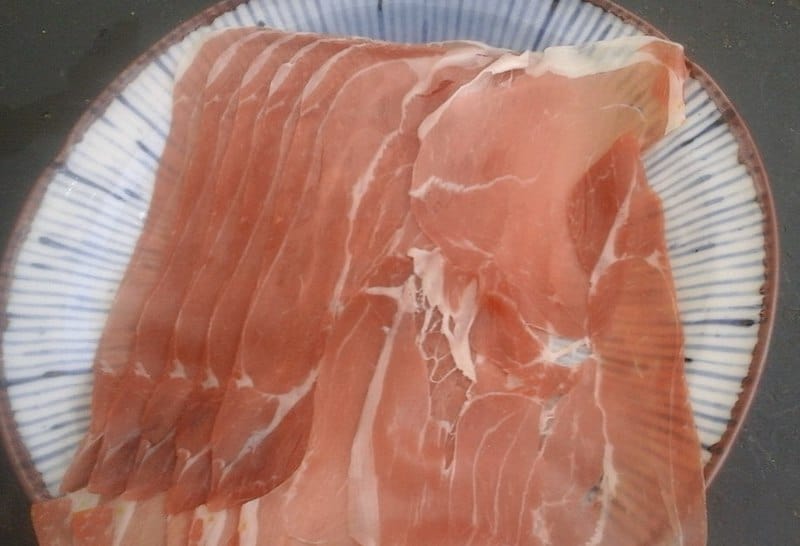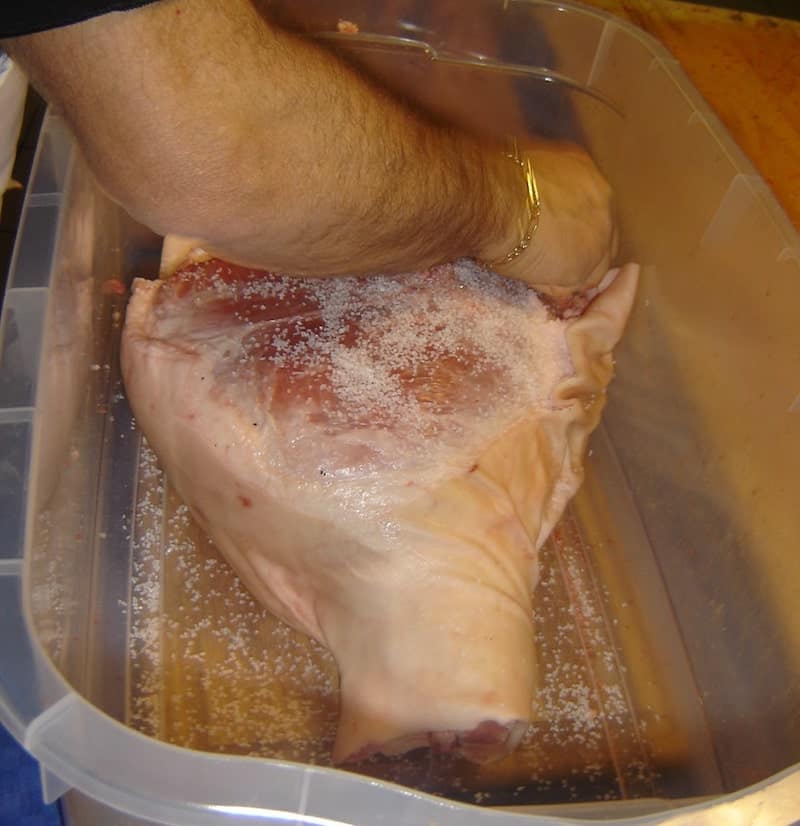Help! My Prosciutto Smells Like Ammonia!
Ammonia is commonly found in nature, but most people are familiar with its pungent odor from household cleaning products or old-fashioned hair dyes.
Repulsion to strong unpleasant smells in food is a natural safety reaction. If you’ve noticed that your prosciutto smells like ammonia, I’m here to answer your questions.
Typically, if meat smells of ammonia, it isn’t a good sign. This is because it may be spoiled or contaminated. Ammonia is also used as a preservative, so the smell may indicate the meat has been treated against E. coli or Salmonella. Finally, meat from some pigs has a natural ammonia smell.
In this guide, I’ll list three reasons why prosciutto smells like ammonia and explain how exactly this smell appears. I’ll also advise on what to do with such prosciutto and prevent this issue from happening again.
Why Does My Prosciutto Smell Like Ammonia?
Most meats and fish smell like ammonia when they start to go bad, and prosciutto is no exception. This smell is related to the breakdown of the nutritional ingredients in the meat, such as proteins and fats.
Ammonia is a chemical compound of nitrogen and hydrogen. It’s a colorless gas that serves as a precursor to food, particularly meat and seafood.
A precursor, in general, is an inactive chemical component that transforms into an active one. So, in small concentrations, it’s present in many foods and is harmless (or even beneficial, but more on that later) at first.
But what happens when ammonia transforms into another chemical form?
Over time, the amount of ammonia in meat rises. When the concentration of ammonia gets too high, it becomes caustic and hazardous.
Caustic substances destroy organic tissues by chemical reaction, so ammonia speeds up the prosciutto degradation process. In other words, the higher the natural ammonia concentration, the faster your prosciutto spoils.
Thus, a strong smell of ammonia indicates spoilage.
However, don’t rush to trash your prosciutto unless you see other signs of it going bad.
Ammonia is known as a strong antiseptic and has been used to preserve food since the late 1890s. It’s widely used to prevent microbial contamination of meats, especially beef rich in fat trimmings.
Ammonia is effective against E. coli and Salmonella. So, meat that smells slightly like ammonia and doesn’t have other signs of deterioration is safe to eat.
The only drawback of such treatment is that it affects the smell and, sometimes, taste. You won’t find ammonia on the label as it’s a processing agent rather than an ingredient.
The problem here is, unlike beef, prosciutto shouldn’t be treated with ammonia. Instead, prosciutto is preserved using other natural ingredients – salt and lard.
You’re safe to eat prosciutto that has been treated with ammonia, but it can’t be considered authentic Italian cured ham.
The rules for cooked prosciutto, also known as deli ham, are less strict. Still, ammonia isn’t the best choice of treatment for prosciutto.
Finally, prosciutto is made from pork. One of the chemical compounds found in pigs, androsterone, determines how the meat smells. So, depending on the genes, some pork will naturally smell like ammonia or urine while others like vanilla.
The the smell usually fades away during cooking; however, some people may still sense it.
The manufacturer can’t know whether the pork will smell like ammonia unless they test every animal for this specific gene.
What to Do When Your Prosciutto Smells Like Ammonia
As mentioned above, your prosciutto may smell like ammonia for three reasons. It’s either spoiled, was treated with ammonia, or the pork it was made from had a high concentration of androsterone.
An ammonia smell isn’t the most appetizing, and you may throw away the prosciutto solely because of personal dislike. But generally, it’s safe to eat if the reason lies in the amount of androsterone or the treatment.
So, to determine whether the prosciutto is spoilt, you must check other signs of deterioration.
Cooked prosciutto must have a pale pink color, and the cured one must be deep red. Ideally, the smell should be pleasant, slightly salted.
However, if you’re reading this article, this point sadly doesn’t apply to your prosciutto. Spoiled prosciutto changes color, becoming greyish, yellowish, too pale, or the opposite, too dark.
Next, of course, mold is a clear indicator of prosciutto going bad (but not all mold – click here to learn more), unless it’s a whole leg. In this case, moldy spots are normal and can be simply cut off.
Finally, spoiled prosciutto becomes slimy or too dry.
If you notice any other signs of spoilage apart from ammonia smell, get rid of the prosciutto. If everything else is perfectly normal, including the recommended use-by date, you may risk trying it.
Don’t eat the whole package in one go, though. Instead, try a small piece, as the taste can also tell a lot about the condition of meat.
How to Prevent Your Prosciutto From Smelling Like Ammonia
So, how do you prevent prosciutto smelling like ammonia if you can’t know about the source of the pork and can’t find ammonia treatment on the label?
he only way to prevent the meat from smelling like ammonia is to avoid buying low-quality prosciutto and ensure proper storing conditions.
Prosciutto made by Italian artisans following the best practices can’t be cheap. Obviously, it should be made in Italy, ideally in Parma or San Daniele.
Look for a yellow and red, circular sign on the packaging that says, “Denominazione d’Origine Protetta” (or DOP), or look for a crown stamp. The crown is a quality sign issued by a governing body regulating Parma ham, Consorzio di Parma.
As for the look of meat, it must be pink rather than brown. And the fat ribbons must be white rather than yellowish.
Finally, good prosciutto should be soft and almost melt in the mouth.
If you managed to buy real prosciutto that doesn’t smell like ammonia in the first place, store it in the fridge, tightly wrapped. Prosciutto leg can be stored in a cool, dry room.
Don’t leave the meat at room temperature for too long and use only clean knives to cut it.
Do all this, and the smell of ammonia shouldn’t appear before the use-by date.
In Summary
Hopefully, this guide has comprehensively answered why your prosciutto smells like ammonia and what to do with it.
While none of the reasons are satisfying, you should always place safety first and not risk eating potentially spoiled meat.
Therefore, I advise you to pay attention to the country of origin, quality marks, and smell before purchasing prosciutto at the store.









